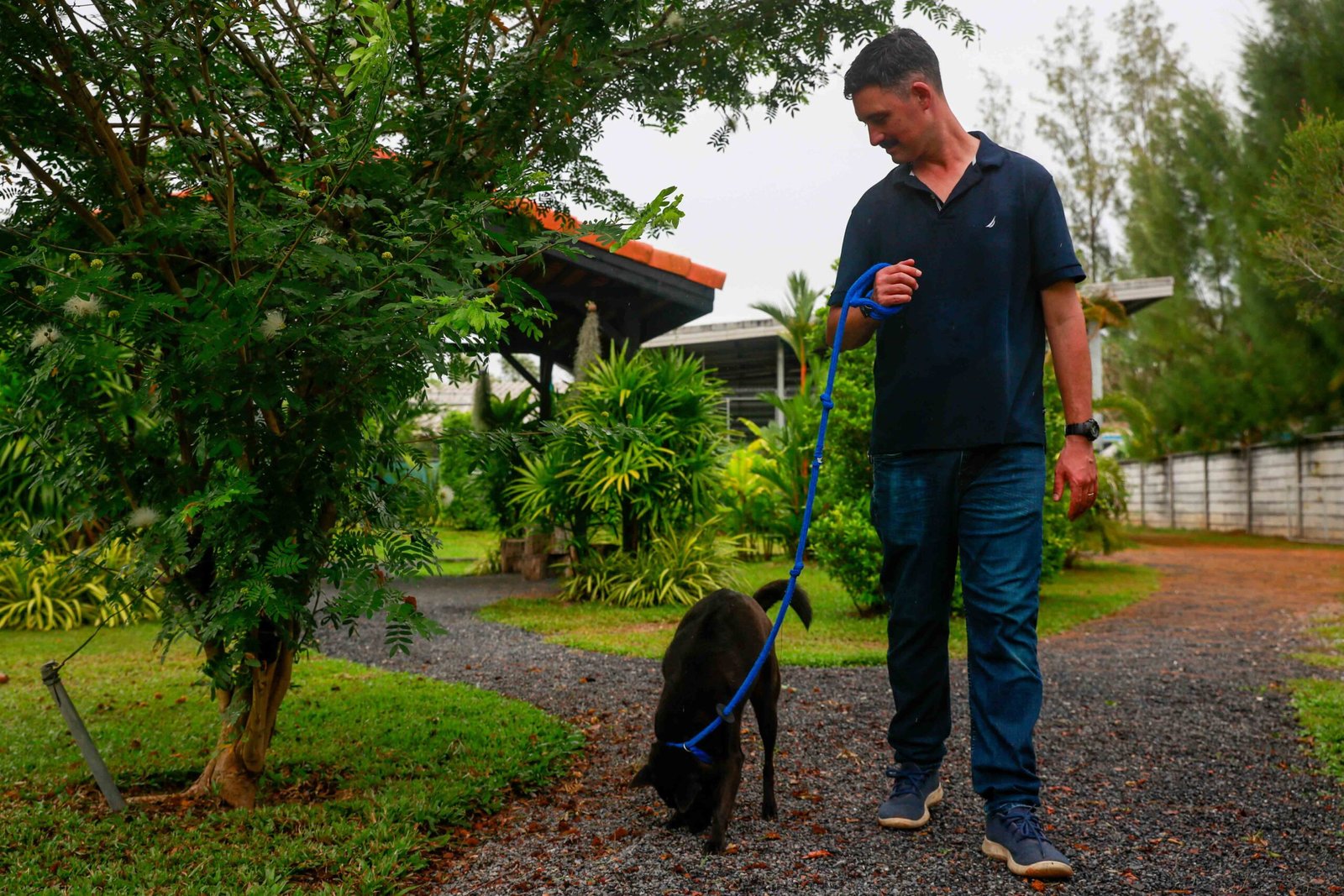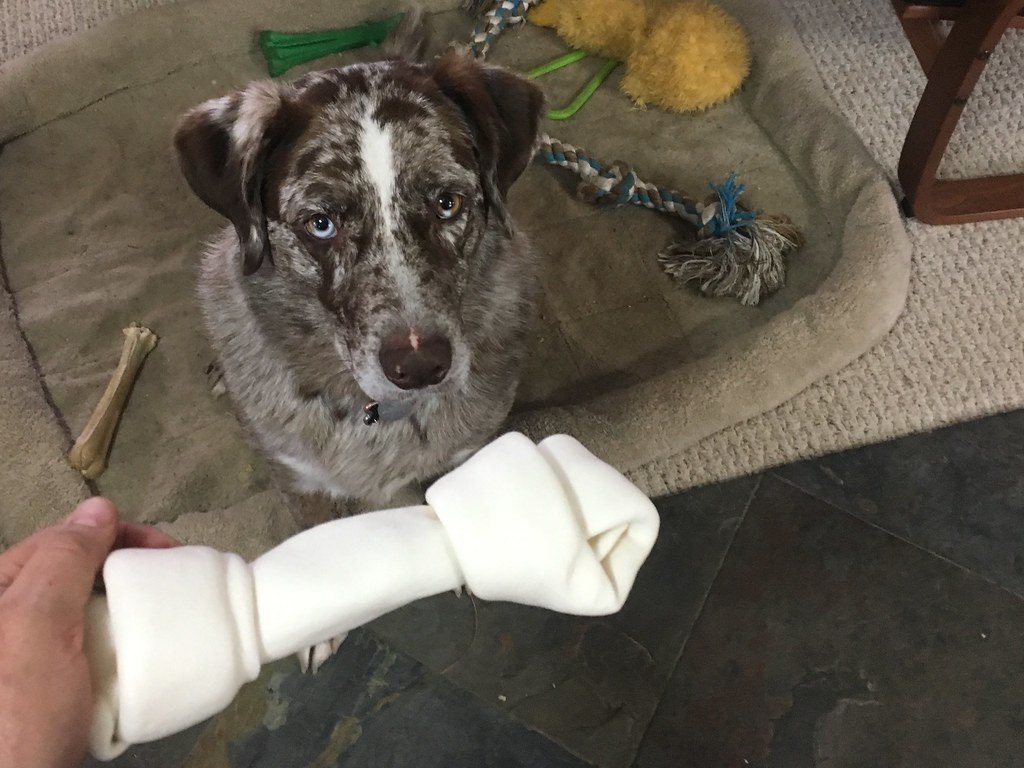Transforming a shelter dog’s life starts with simple acts of love, patience, and consistency. From creating a safe space at home to establishing a gentle routine, each step builds trust and confidence. Training with positive reinforcement and offering regular playtime helps them feel secure and valued. Regular vet visits, good nutrition, and even a comfy bed can go a long way in showing you care. Socializing them slowly and celebrating small wins helps ease anxiety and builds a lifelong bond. Most importantly, your kindness, time, and affection are the game changers. For a shelter dog, love truly makes all the difference.
1. Offer a Safe and Calm Home Environment

For a shelter dog, the world can feel overwhelming. Imagine being suddenly transported to a place where nothing is familiar—new smells, new faces, even new sounds. Your home should be a sanctuary, not a source of stress. Create a quiet space just for your dog, away from loud noises and heavy foot traffic. This safe zone might be a cozy bed in a corner, a crate draped with a blanket, or simply a soft rug in a peaceful room.
Consistency is key. Try to keep routines predictable so your new companion knows what to expect. Avoid sudden changes in their environment, and introduce them to new spaces slowly. A calm home is the first step in building trust and making your dog feel truly welcome. Just like humans, dogs crave security—let your home be the safe haven they’ve been dreaming of.
2. Practice Gentle and Patient Introduction
First impressions matter, especially for a dog unsure of what comes next. When your shelter dog arrives, let them take the lead. Allow them to sniff around and get their bearings at their own pace. Resist the urge to crowd them or introduce too many new people at once. Imagine meeting a whole crowd after a stressful journey—you’d want a moment to breathe, too.
Speak in a soft, reassuring voice and let them come to you when they’re ready. Use treats to encourage positive associations, but don’t force interactions. If you have other pets, introduce them gradually and under controlled circumstances. Remember, building trust isn’t a sprint; it’s a gentle walk alongside each other, step by step.
3. Establish a Predictable Routine

Dogs thrive on routine, especially those coming from the unpredictable world of a shelter. Set regular times for feeding, walks, play, and bedtime. This structure helps your dog feel safe and reduces anxiety, turning chaos into comfort. Imagine how comforting it feels to know there’s breakfast every morning and a cozy bed waiting at night.
Start small: feed your dog at the same time each day and stick to a consistent walk schedule. Use cues like ringing a bell before going outside or saying “bedtime” before settling in for the night. Over time, these routines become familiar, building trust and helping your dog feel grounded. Predictability might seem boring to us, but for a shelter dog, it’s pure gold.
4. Shower Them with Affection and Positive Reinforcement
Love isn’t just a feeling—it’s an action. Shelter dogs may be wary of affection at first, but gentle touch, kind words, and praise can work wonders. Celebrate every small victory, whether it’s sitting on command or simply wagging their tail. Positive reinforcement, like treats and belly rubs, lets your dog know they’re on the right track.
Be patient if your dog isn’t cuddly right away. Some dogs need time before they feel safe enough to relax. Let them set the pace, and never punish or scold. Instead, reward the behaviors you want to see. Over time, your warmth will melt away their fears, showing them that kindness is here to stay.
5. Provide Nutritious, Delicious Meals
Food is more than fuel—it’s comfort, reward, and a powerful way to show love. Many shelter dogs arrive underweight, with dull coats or sensitive stomachs. Choosing high-quality, nutritious food can make an immediate difference in how your dog feels. Consult your vet to pick the best diet, especially if your pup has special needs.
Offer meals at regular times, and use treats for training and bonding. Try adding a spoonful of wet food or a sprinkle of healthy toppers to make meals extra enticing. Watch for food sensitivities, and always ensure fresh water is available. A well-fed dog is a happy dog, and every meal is a chance to show you care.
6. Ensure Regular Veterinary Care

One of the most loving things you can do for your shelter dog is to keep them healthy. Schedule a vet visit soon after bringing them home—even if they seem perfectly fine. Many shelter dogs have hidden issues, from parasites to dental problems, that need professional attention.
Keep up with vaccinations, flea and tick prevention, and regular check-ups. Discuss spaying or neutering, if it hasn’t already been done. If your dog seems anxious at the vet, bring a favorite toy or blanket for comfort. Think of your vet as part of your support team, ensuring your furry friend enjoys a long, healthy, pain-free life.
7. Create Opportunities for Gentle Socialization
After time in a shelter, some dogs are shy or fearful around new people and animals. Socialization is about gentle exposure, not overwhelming experiences. Start by inviting calm, dog-friendly visitors to your home, or take quiet walks where your dog can observe the world from a safe distance.
Reward calm behavior and give your dog space if they seem anxious. Gradually introduce new sights, sounds, and smells at your dog’s pace. Dog parks might be too much at first; instead, consider short, positive playdates or group training classes. Socialization is like learning to swim: some dogs dive right in, while others need to dip their toes first.
8. Engage in Play and Enrichment Activities

Play is more than fun—it’s a vital part of a shelter dog’s recovery. Toys, games, and puzzles stimulate the mind and body. Start with simple games like fetch or tug-of-war, and offer a variety of toys to keep things interesting. Rotate toys every few days to maintain excitement.
Mental enrichment is just as important. Try treat-dispensing puzzles or hide-and-seek games with favorite snacks. Enrichment relieves boredom, reduces anxiety, and helps your dog discover their playful side. If you’re both having fun, you’re doing it right! There’s no better sound than a dog’s joyful bark echoing through your home.
9. Focus on Gentle, Consistent Training

Training isn’t about control—it’s about communication. Shelter dogs might not know basic commands or house rules, so start with the essentials: sit, stay, and come. Use positive reinforcement—treats, praise, and affection—to teach each new skill. Avoid harsh corrections, which can damage trust and confidence.
Short, regular training sessions work best. Keep it fun and celebrate progress, no matter how small. If you hit a roadblock, consider working with a professional trainer who uses force-free methods. Consistent training not only builds good manners but strengthens the bond between you and your dog, turning confusion into cooperation.
10. Give Them Time and Space to Adjust

Healing takes time, and every dog’s journey is different. Some shelter dogs settle in within days; others need weeks or even months to feel secure. Be patient and let your dog set the pace. Don’t push them out of their comfort zone before they’re ready.
Watch for signs of stress, like excessive panting or hiding, and respond with reassurance, not pressure. Respect their boundaries and celebrate every sign of progress, no matter how tiny. Just like us, dogs need time to heal from past hurts. Your patience sends a powerful message: you’re safe, and you’re home.
11. Explore the World Together—Safely
Adventure can be healing, but it must be safe. Take your shelter dog on gentle walks in quiet areas, letting them sniff and explore at their own speed. Gradually introduce new sights and sounds, like passing cars or bustling parks, always paying attention to their comfort level.
Use a secure harness and leash, and avoid busy areas until your dog is confident. Bring treats along to reward calm behavior and make outings positive. These shared experiences help your dog build courage and curiosity, turning the outside world from something scary into something exciting—a place to discover, with you by their side.
12. Build a Bond Through Touch and Communication

Touch can be transformative for a shelter dog. Gentle petting, brushing, or even just sitting quietly together builds trust and affection. Watch your dog’s body language to learn what they like—some dogs love belly rubs, while others prefer a soft scratch behind the ears.
Talk to your dog throughout the day, using a calm, friendly tone. Dogs may not understand every word, but they feel the love in your voice. Over time, you’ll develop your own language of looks, gestures, and shared moments. This bond is the heart of your relationship, a silent promise that you’re in this together.
13. Celebrate Their Unique Personality and Progress
Every shelter dog is a one-of-a-kind soul, with quirks, talents, and a heart longing to be understood. Embrace their individuality—whether they’re goofy, shy, or full of boundless energy. Notice the little victories: the first wag, the first playful leap, the day they finally curl up beside you.
Mark milestones with treats, toys, or extra cuddles. Share their story with friends and family, and be proud of every step forward. Your dog’s transformation is a journey worth celebrating, a testament to the power of love and care.
At the heart of every shelter dog is a loyal companion just waiting to thrive with a little love and patience. By offering stability, kindness, and a second chance, you’re not just changing their life—you’re gaining a lifelong friend. Each small effort adds up to a big transformation. And in the end, the love you give comes back tenfold in tail wags, happy barks, and endless devotion.What small act of kindness will you offer today to change a shelter dog’s tomorrow?

Andrew Alpin from India is the Brand Manager of Doggo digest. Andrew is an experienced content specialist and social media manager with a passion for writing. His forte includes health and wellness, Travel, Animals, and Nature. A nature nomad, Andrew is obsessed with mountains and loves high-altitude trekking. He has been on several Himalayan treks in India including the Everest Base Camp in Nepal.





